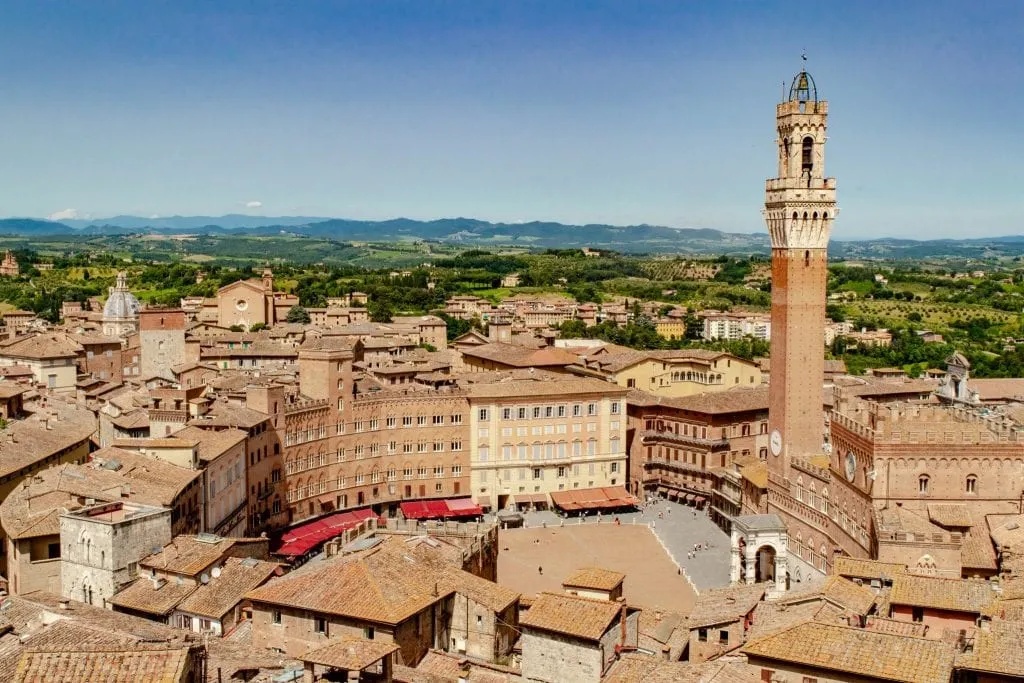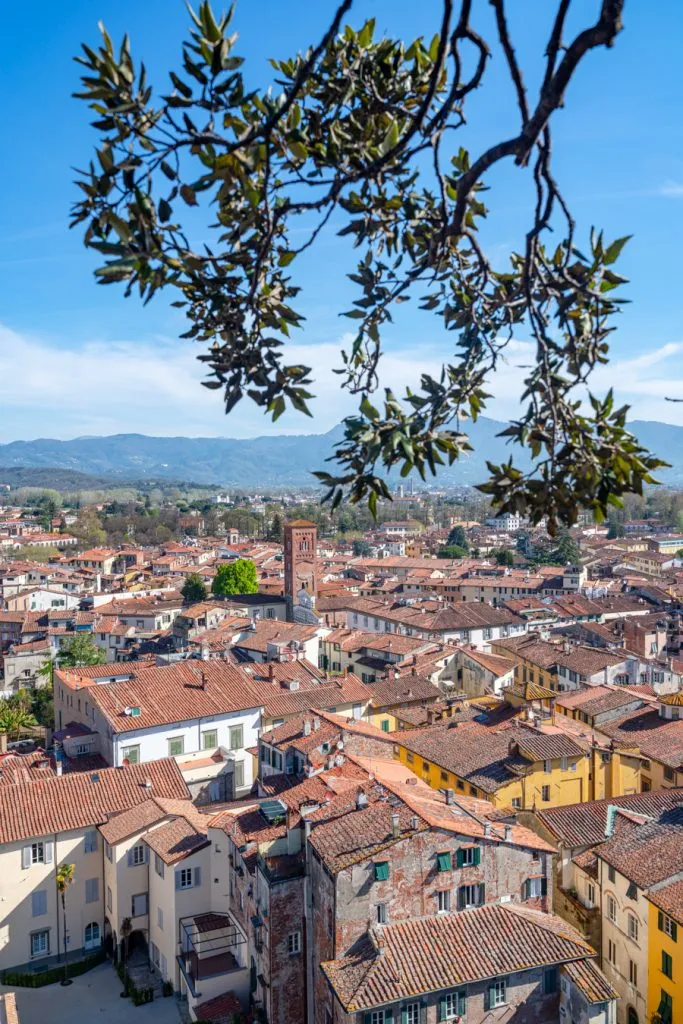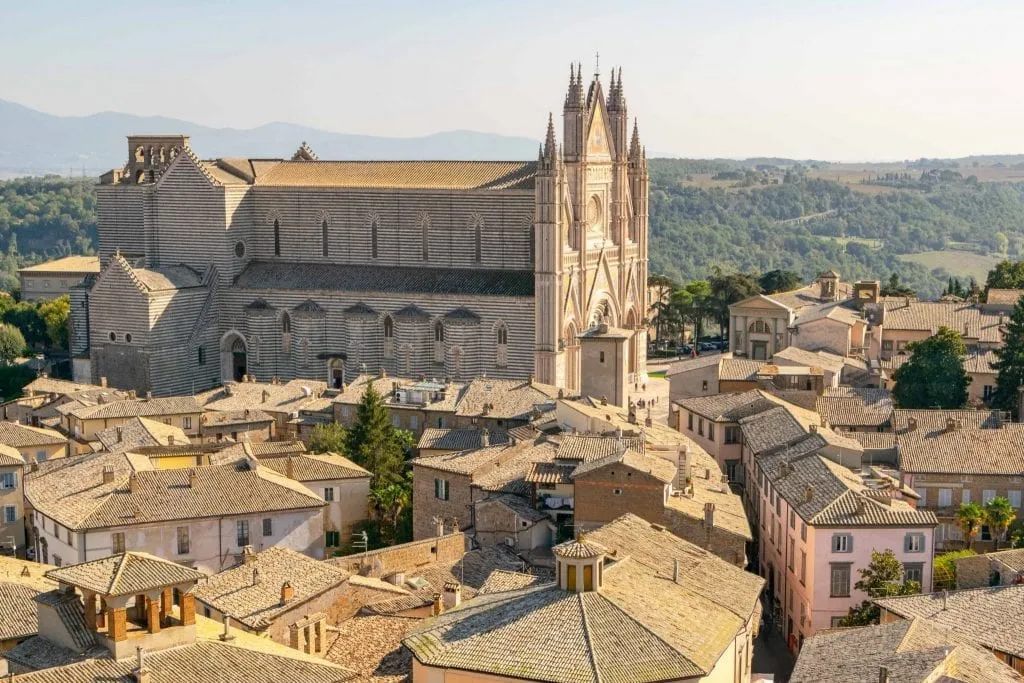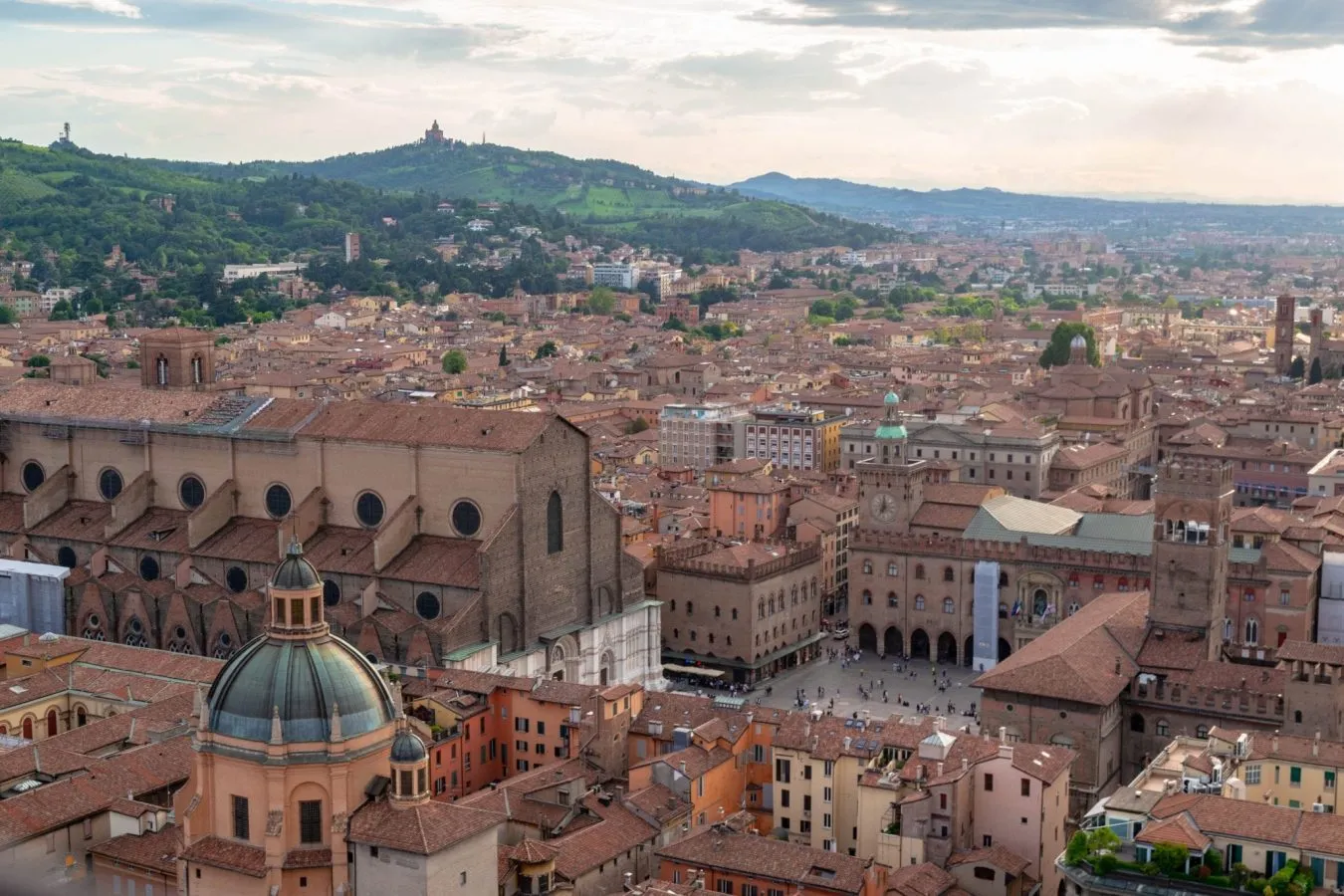It may be the most famous tower in all of Italy, and it’s certainly the most famous leaning tower–but is climbing the Leaning Tower of Pisa (officially called the Torre Pendente di Pisa, or simply the Torre di Pisa) actually worth the effort… and the steep price tag?
After more trips to Tuscany than I can count, I was determined to finally find out for myself on our latest trip to Italy.
The verdict?
It’s memorable and iconic, but climbing the Leaning Tower of Pisa has some significant pros and cons, especially if you’re working with limited days in Italy and you need to pick and choose between the overwhelming number of wonderful things to do in Tuscany.
Here’s everything you need to know before committing to climbing the Leaning Tower of Pisa, based on my firsthand experience climbing the tower!
Table of Contents
- Fast Facts: What is the Leaning Tower of Pisa?
- What’s it Like to Climb the Leaning Tower of Pisa?
-
Practical Tips for Visiting Pisa’s Leaning Tower
- Book your Pisa tower climb in advance.
- Understand that the Leaning Tower of Pisa is ticketed separately from the rest of the complex.
- … With the exception of the Cathedral, which you should absolutely visit.
- Wear non-slip, comfortable shoes for climbing the tower.
- Expect barriers at the top to impede the view.
- There are two levels to visit at the top of the Leaning Tower of Pisa–don’t miss the top one!
- There are public toilets at the far edge of the Piazza dei Miracoli.
- Leave buffer time to get to the Piazza dei Miracoli from Pisa Centrale.
- Final Verdict: Was Climbing the Leaning Tower of Pisa Worth It?
- Alternative Towers to Climb in Tuscany (+ Beyond)
- Read More About Visiting Tuscany (+ Italy)

Fast Facts: What is the Leaning Tower of Pisa?
Sure, we’ve all seen plenty of photos and heard the Leaning Tower of Pizza joke as kids, but what is this famous tower anyway?
The Leaning Tower of Pisa is, technically speaking, the bell tower (or campanile) of the Pisa Cathedral, though it is notably detached from the building.
It’s located in the historic center of the city of Pisa, in the Piazza dei Miracoli (Square of Miracles), along with the cathedral itself and the associated baptistery.
Work started on the Leaning Tower of Pisa in 1173, and it took nearly 200 years to build–and no, the iconic lean was not intentional.
At the time it was built, the city was the center of the independent Republic of Pisa. Located along the Arno River (the same river that passes through Florence), Pisa was once located on the coast and was a powerful port city.

What’s it Like to Climb the Leaning Tower of Pisa?
In many ways, climbing the Leaning Tower of Pisa was like many other tower climbs throughout Europe: stone staircases, tight spaces, and crowds.
… Just, you know, much more crowded!
I purchased this timed entry ticket to climb the tower (scheduling your climb is virtually required these days), and when I went to get in line 20 minutes before the starting time, I was told to come back in 10 minutes, as they wanted to make sure that only people with the next time slot were standing in line.

Despite the organized crowd control outside and a security check at the bottom, though, once our group was given the go-ahead to start, the climb itself was a bit of a free-for-all (as is usual when climbing towers in Italy).
The warnings about slippery steps and the lack of handrails are things to take seriously, especially if you have any mobility concerns.
There are two different levels where you can exit the staircase the enjoy the view, and I highly recommend checking out both.
The 8th floor, which is the top level, is home to the tower’s bells, and–somewhat unusually–you can walk amongst them, which is one of the most unusual features of the tower climb.
And of course, there are two questions that people are most curious about when it comes to climbing the Leaning Tower of Pisa, which are…

What’s the view from the top of the Leaning Tower of Pisa like?
The view from the top of the Leaning Tower of Pisa is beautiful, but in the context of tower views in Italy, it’s arguably average at best.
One side of the tower looks out over the historic center of Pisa, which is beautiful but very flat.
Another side overlooks the hills of Tuscany, with the newer section of Pisa (complete with a football stadium) in the foreground.
And, from yet another angle, you have the view over the Piazza dei Miracoli and the Duomo itself, which is lovely.
I don’t want to downplay the view much, because, well, this is a nearly 1000-year-old tower in Tuscany and therefore it virtually by definition has a beautiful view–but when compared to say, any of the best views of Florence, Siena, or even Lucca, I can’t say that I think it fully stacks up.

What is the Leaning Tower of Pisa like inside?
The inside of the bell tower is very plain, and to be perfectly honest, looking up from the bottom feels a lot like standing at the bottom of a grain silo–admittedly, one made of gorgeous marble.
The staircase in the Leaning Tower of Pisa is enclosed, which is excellent for those of us with a fear of heights and less than ideal for those with concerns about feeling claustrophobic.
You’ll ascend and descend the same staircase, so it’s inevitable that you’ll need to step aside for people heading in the opposite direction.
The stairs themselves have deep grooves worn into them from nearly 1000 years of climbs, and they’re one of my favorite parts of the building!
They are, however, a bit slippery, and there’s no handrail to speak of along most of the route.

Practical Tips for Visiting Pisa’s Leaning Tower
Book your Pisa tower climb in advance.
The crowds at the Piazza dei Miracoli and the Leaning Tower of Pisa are some of the biggest in Tuscany–this is not somewhere to show up without pre-booking your tickets.
I booked this timed-entry tower ticket a few days in advance, which includes access to the Pisa Cathedral/Duomo in addition to the tower.

Understand that the Leaning Tower of Pisa is ticketed separately from the rest of the complex.
As the most famous attraction in Pisa by far, the Leaning Tower of Pisa itself is handled separately from the rest of the attractions in the Piazza dei Miracoli.
If you’d also like to visit the Baptistery, Camposanto, Sinopie Museum (home to restored frescoes from the 1300s), and Opera dell Duomo Museum, you’ll need a “complete visit” ticket purchased in combination with or separately from the tower ticket.
(Somewhat confusingly, a standard “complete visit” ticket does not include tower access.)
You can also purchase access to each monument individually, but they’re priced so that the combination ticket makes much more sense than anything else.
Depending on how far in advance you’re planning your trip and what exactly you want to see, you may want to check both Pisa’s direct ticket site and third-party operators like Get Your Guide (which is where I purchased my ticket).
Either way, be sure to read the ticket inclusions carefully, as there are several different ticket options.

… With the exception of the Cathedral, which you should absolutely visit.
Dating to the 11th century, the Pisa Cathedral, or Duomo di Pisa, is magnificent inside and out, and it’s definitely worth going inside!
Unlike the rest of the monuments in the Piazza dei Miracoli, the Duomo is free to visit, though you do need a registered ticket.
The ticket is automatically included in virtually any ticket for visiting attractions at the Piazza dei Miracoli, though you can also register for it separately if you don’t plan to visit anywhere else).

Wear non-slip, comfortable shoes for climbing the tower.
The marble steps of the Leaning Tower of Pisa have been worn smooth over centuries, and they’re very slippery!
This isn’t a place for flip-flops: opt for sturdy shoes with some grip to them, and move with caution as you climb.
Expect barriers at the top to impede the view.
Most monuments have some sort of safety barrier installed these days, which makes perfect sense–but in Pisa’s case, it definitely impedes the view.
The barrier at the top of the Leaning Tower of Pisa is more or less a metal fence, and to avoid having it in your photos, you’ll need to stick your phone or camera directly up to the barrier.

There are two levels to visit at the top of the Leaning Tower of Pisa–don’t miss the top one!
The first level that you exit the staircase onto has a lovely view of Pisa, the Piazza dei Miracoli, and the Duomo–but you’ll want to keep climbing.
The top level of the Leaning Tower of Pisa not only offers a slightly higher vantage point, it also allows you an opportunity to walk amongst the tower’s seven historic bells (one for each musical note).
Being able to walk amongst the centuries-old brass bells is one of the most interesting parts of visiting the Leaning Tower of Pisa, and isn’t an experience that you get at every bell tower in Italy.

There are public toilets at the far edge of the Piazza dei Miracoli.
You’ll find them between the Duomo and the town walls, and they cost 1 Euro to use (though you won’t need cash–they take tap-to-pay these days).
Leave buffer time to get to the Piazza dei Miracoli from Pisa Centrale.
It’s about a 25-minute walk, or a 15-minute bus ride (plus waiting to board), from the Pisa train station (Pisa Centrale) to the Piazza dei Miracoli.
From there, you’ll need to make your way to the base of the tower itself, ticket in hand (or even more likely, downloaded to your phone)–and odds are high that you’ll want to pause to appreciate the view along the way, especially once you enter the Piazza dei Miracoli.
Ideally, we’d recommend arriving in Pisa no less than an hour before your tower climb, though even more buffer time could make for a more relaxed day (and possibly a chance to visit the Duomo or use the restroom before starting your climb).

Final Verdict: Was Climbing the Leaning Tower of Pisa Worth It?
So, did I think that climbing the Leaning Tower of Pisa was worth it?
It’s hard to put into words, because I did greatly enjoy watching a childhood icon come to life, and finally getting to check off one of the most famous bucket list experiences in Italy.
Ultimately, I’m glad I climbed the Leaning Tower of Pisa, and I’ll remember it forever.
But, do I think it’s the best tower climb in Tuscany? No. The best leaning tower climb in Italy? Also no.

However, there’s absolutely no rule that you can only climb up to one viewpoint in Italy–and in fact, I’d argue that the ideal Italy itinerary involves climbing up several monuments.
The bottom line is, if you want to climb the Leaning Tower of Pisa in Italy, you should. If you’ve been dreaming of visiting the tower for ages, it will almost certainly be worth it to you!
On the other hand, if you just feel vaguely like it’s something you’re supposed to do when visiting Italy but you aren’t particularly excited about it, skip it with no regrets.
Instead, opt for one of the many other incredible day trip options from Florence (or from Siena, or Lucca, or wherever it is that you’re traveling from)–I’ll list a few of our favorites below.

Alternative Towers to Climb in Tuscany (+ Beyond)
So, you want to seek out some of the best viewpoints in central Italy… but you’re not sure if the Leaning Tower of Pisa is worth it after all?
If you’re looking for tower climbs within day-tripping distance of Florence, here are a few others to consider!
Campanile di Giotto, Florence
There are dozens of incredible viewpoints in Florence, including the magnificent view from the top of the Duomo, but for the most direct comparison to the Leaning Tower of Pisa, I’ll highlight the Duomo’s very own bell tower here.
While the Campanile di Giotto suffers from the same intense fencing blocking the view that Pisa’s bell tower does, it offers a stunning and up-close view of Brunelleschi’s Dome, which is one of the most remarkable pieces of architecture in Italy.
We cover all the details of visiting Florence’s Duomo complex in this blog post.
(And, if you’re looking for a different viewpoint, I’ll say that the view from the bell tower of the Palazzo Vecchio is arguably our favorite in Florence).

Facciatone, Siena
While you could climb to the top of the iconic Torre del Mangia when visiting Siena, you could also opt to get a view of the famous tower instead!
The view from Facciatone is one of my personal favorites in Tuscany and shows off Siena’s oval-shaped Piazza del Campo in all its glory.

Torre Guinigi, Lucca
For a different kind of tower experience, head to Torre Guinigi in Lucca!
Not only is this tower inexpensive and generally uncrowded (especially compared to heavy-hitters like the famous viewpoints in Pisa and Florence), but it also offers a unique twist: a garden in the sky!
In addition to the beautiful trees growing from the roof of the tower, it also offers beautiful views of Lucca, which is a gorgeous Tuscan city that absolutely deserves a visit.

Torre del Moro, Orvieto
Orvieto’s 14th-century Gothic cathedral is considered one of the most remarkable in Italy… and climbing the Torre del Moro will give you an enchanting view of both the cathedral and the hilltop town!
Entry is also included with the Orvieto Card, making it a simple addition to a trip to Orvieto.

Torre degli Asinelli, Bologna
Last but certainly not least, Asinelli Tower in Bologna is arguably the best alternative to climbing the Leaning Tower of Pisa… because it also has a sharp lean!
It’s also very tall (nearly 500 wooden steps to the top–this one tested my fear of heights!), and offers incomparable views of Bologna, including of Garisenda Tower next door and Piazza Maggiore.
The one downside is that as of the time that I’m writing this blog post in late 2024, it’s currently closed indefinitely for repairs–otherwise, it would be listed first!
You can check this page for updates on the renovations and, eventually, to make reservations to complete the climb.

Read More About Visiting Tuscany (+ Italy)
Made your decision about whether or not to climb the Leaning Tower of Pisa, and ready to keep planning your trip to Tuscany?
We’d love to help!
You can browse our 100+ Italy blog posts here, or check out these guides:
- How to Spend One Perfect Day in Florence (Itinerary + Tips!)
- Spring in Tuscany: Things to Do + What to Expect When Visiting!
- Marvelous Montepulciano, Italy: Things to Do + Travel Guide
- Driving from Rome to Florence: Where to Stop + Travel Tips
- Volterra, Italy: Fun Things to Do + Guide

About Kate Storm